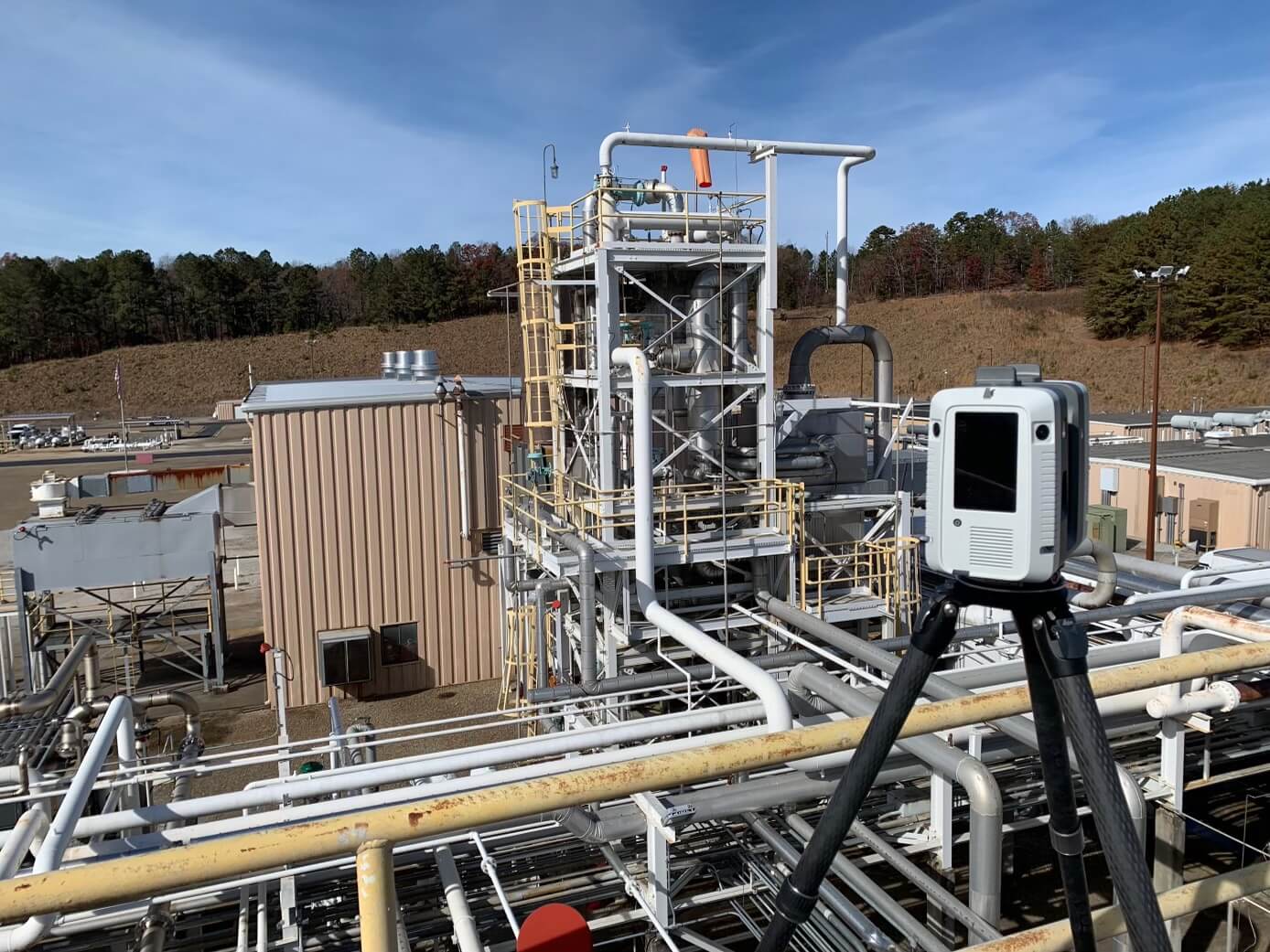Contact Us
Are you interested in cooperation? Give us a call or write to us – we will answer any questions.
A digital twin, referred to as “Digital Twin” in the title, is a virtual representation of a planned or already existing physical building, product, system, or process in a digitally replicated form. Its purpose is to accurately mirror the physical counterpart and be utilized for practical purposes such as simulation, integration, testing, monitoring, maintenance, and management.
Since its inception, the concept of Digital Twin has aimed to present the product’s lifecycle as the foundation for managing its physical counterpart, spanning from design and construction to operation and disposal.
It is quite common for a digital twin to be created before its physical counterpart. Utilizing the Digital Twin during the project’s creation phase enables the digital modeling of the entire lifecycle of the intended unit and facilitates simulation testing of various solutions before their implementation. Once the final product is developed, the digital twin can be regularly synchronized with its physical counterpart.


A wind turbine is a prime example of a digital twin. Equipped with sensor systems that measure various components affecting its functionality, it generates a vast amount of data regarding different aspects of its real-life counterpart. Information about weather conditions, rotation speed, wind force, energy efficiency, and temperature is collected and processed to be applied in the digital twin, known as the Digital Twin.
One of the initial and most fascinating applications of the digital twin concept was its use in aerospace by NASA. They conducted simulations of launches, flights, and landings based on computer models of actual shuttles. Data about the construction, materials used, and the replication of physics acting on the spacecraft allowed for the evaluation of different travel scenarios, calculation of failure probabilities, and elimination of potential errors. Digital twins, as digital counterparts, are the result of continuous improvement in the design of the final product and various engineering activities that enrich this process with as much data as possible. Conceptual sketches and technical drawings, based on manual work by engineers, have progressed to computer-aided engineering and, ultimately, to fully digital systems engineering, with direct information flow between the digital twin and its physical counterpart.
DTP – Digital Twin Prototype, which includes all designs, analyses, and prefabrication processes aimed at achieving the most efficient and refined form of the physical twin.
DTI – Digital Twin Instance, which is a digital manifestation of the physical object in an individual form. Each physically produced twin has its unique DTI, which remains connected throughout its entire life cycle until disposal.
DTA – Digital Twin Aggregate, which is a collection of all DTIs in an aggregated digital database. It combines information about each twin within a given structure and serves various useful functions such as database archiving, forecasting and simulation creation, and a source of knowledge and learning about specific designs and systems, aiming to further enhance all processes.









SMART FACTORIES – Optimizing production processes brings tangible benefits, as observed in the example of a corporation. Unilever, in its prototype project utilizing artificial intelligence, reduced energy consumption and simultaneously increased productivity in one of its factories, resulting in savings of 2.8 million dollars.
PROJECT AND SYSTEM SUPERVISION – General Electric, through the use of machine learning, has designed a system capable of predicting the risk of failures and calculating the probable costs of resolving such failures. This allows for the supervision of their power grid installations, wind and gas turbines, as well as aircraft engine operations.

CONSTRUCTION FROM A TO Z – The Application of Digital Twins in Construction Ensures a Seamless Transition from Design to Construction and Facility Management, all the way to Demolition. A digital twin not only monitors the facility in real-time but also allows for the determination of the timing and costs of necessary repairs.

THE CITY OF THE FUTURE – One of the cities actively utilizing this solution is Singapore. Real-time monitoring of data from city cameras, humidity and air temperature sensors enables proactive response to emerging threats and even prevention through simulations of events such as natural disasters or road accidents.






The BIM process (link to BIM modeling) encompasses data created during the planning and design phases. The digital twin extends data acquisition to the construction and facility management phases, and can also serve as a source of information for future planning and design projects.
Harnessing the full potential of the Digital Twin requires multidisciplinary models at its core, as well as system integration and data flow between all involved parties. BIM is the most effective path to creating an accurate, high-value digital twin. Here are a few examples of our DIGITAL TWIN implementations:
Mammut Shopping Mall, Budapest: One of the most demanding projects due to its size. The gallery alone spans over 100,000 square meters, but the total area scanned and modeled by our specialists exceeded 200,000 square meters.
01.
Companies involved in building maintenance, whether external operators or management firms, will be able to accurately predict when and for how long individual components of ventilation, fire protection, or plumbing systems will be used, and whether they are functioning as intended and according to specifications. This allows for the detection of failures before they occur or the replacement of consumable parts before they wear out. The application of Digital Twins enables optimal planning of technicians’ work and automated ordering of required spare parts in advance.
02.
Frequency and duration of use, temperature, or access control: facility management utilizes a wide range of parameters and data from different systems. This approach not only generates valuable insights for optimal utilization of different parts of a building but can also be applied to achieve intelligent solutions in managing the digital twin.
03.
When people visit unfamiliar buildings for meetings, finding the right room can sometimes turn into a frantic marathon. An easy-to-use digital indoor navigation system can help guide guests from the underground garage to the correct conference room or any other location within the building.
04.
Digital Twins allow companies to verify and test the final product before it actually exists. By designing a digital replica of the planned process, facility, system, or machine, this technology enables designers and engineers to detect potential failures, conflicts in building installations, and any shortcomings before production or construction begins. They can even intentionally disrupt the system to test unexpected scenarios, evaluate the reaction of a process to new variables, and determine appropriate strategies. The digital twin elevates risk assessment capabilities to a whole new level, facilitates the design and testing of new machines and devices, optimizes factory and production line operations, and ensures seamless facility operation.
05.
Real-time monitoring and control of process and system performance can be a very challenging task, and in some cases, even impossible to accomplish. Thanks to Digital Twins, remote access from any location is not only possible but also easy, enabling comfortable and fast control and monitoring of system or facility performance.
06.
Through the integration of databases containing material costs, services, labor, or necessary tools, the digital twin presents this data in real-time in a digital form. In-depth analysis of such a large amount of data allows for knowledge-based decision-making, resulting in not only financial savings but also shorter decision-making time.
As we already know, twin planning, or “Digital Twin,” refers to the dual planning where the first level is virtual planning, and the second is physical. The virtual twin allows for modifications, testing of systems, installations, and processes to understand their impact on the physical model, eliminating the need to interrupt production, construction, or implementation processes.
The emphasis on cost-effective design, construction, and, most importantly, subsequent operation requires the implementation of such solutions as an essential component of investments.
Market analyses conducted by specialized research firms predict that the value of Digital Twins will reach $30 billion by 2025, and it may even surpass this mark. Currently, there is a particular demand for Digital Twin technologies in China and India, but it is only a matter of time before their development extends to other markets.
Although the implementation of this technology currently involves significant costs, as is often the case with modern solutions, they gradually become cheaper and more common.
Considering the ongoing digital transformation and the immersion of people into the virtual world, it can be said that the creation of digital twins for not only most objects, machines, and tools but also humans is only a matter of time.
Are you interested in cooperation? Give us a call or write to us – we will answer any questions.
